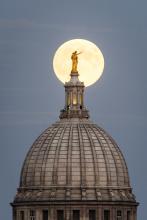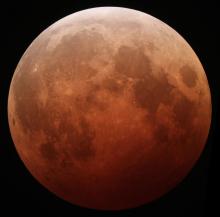Listen to today's episode of StarDate on the web the same day it airs in high-quality streaming audio without any extra ads or announcements. Choose a $8 one-month pass, or listen every day for a year for just $30.
You are here
Perseid Meteors
This is a bad time for a full Moon that’s especially big and bright. That’s because a meteor shower will reach its peak over the next couple of nights. But a full Moon overpowers all but the brightest meteors. And a Moon that’s especially close — making it especially bright — is an even bigger hindrance. It reduces the number of meteors you might see to just a handful — even if you’re far away from city lights.
The Perseid shower is one of the more reliable meteor showers. At its peak, it usually produces a dozen or two “shooting stars” per hour, and sometimes a lot more. This year, though, the showing should be much weaker — the result of the pesky full Moon.
The Moon will reach its “full” phase this evening — about 30 hours after it passed closest to Earth for the month — 223,587 miles away. That’s the Moon’s third-closest approach of the year — about 15,000 miles closer than average. At that range, the Moon shines several percent brighter than average.
Some describe such a close Moon as a super-Moon, but others don’t. That’s because there’s no formal definition for a super-Moon. For some, it’s the closest full Moon of the year. For others, it’s any full Moon within a certain distance — although different groups use different distances.
Super-Moon or not, this month’s full Moon will be close, big, and bright — and it’ll block out most of the Perseid meteor shower.
Script by Damond Benningfield






